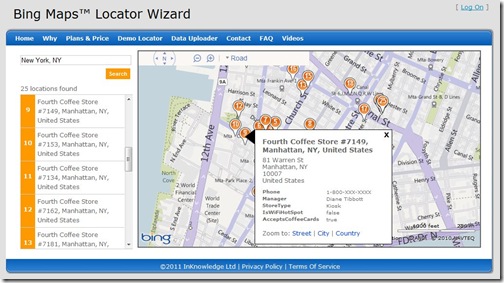The help files for Google Offers have also been expanded to now include actual details about the program. I have abstracted some of the highlights:
Participation Requirements
- To participate in Google Offers, you … should be financially stable, and must have positive customer reviews.
Concerns about meeting demand
Google will pay you 80% of your share 4 days after your offer purchase period ends.
Changing scheduled dates and canceling live offers
Once an offer is scheduled, there is very little flexibility to make changes to your start date
Once an offer is live, you won’t be able to cancel or make changes to the details, copy or terms
Offers selection and scheduling
How you’re notified if your offer is selected
In most cases, you’ll be notified at least 5 days before your offer is scheduled to run. In rare circumstances, we may choose to run your offer a few days earlier. The offer will have been approved by you beforehand, so the only difference would be that the offer is advertised 2 days earlier than scheduled. We’ll notify you if this is to happen.
We have an Editorial team that will help create the copy and any creative materials associated with your offer, with information that you provide. You will be able to review the offer and must give your final approval before it goes live for sale.
Creating and customizing Google Offers
Offer customization
You can customize many aspects of a Google Offer for your business. Here are just a few of the elements you can specify for your offer:
Number of offers a customer can purchase
Offer redemption period
Amount of discount on the offer
Store locations where the offer may be redeemed
Payments and refunds for Google Offers
Receiving payments for your offer sales
We will help you set up a special account with us, where you will enter your bank account information. Google will automatically initiate proper payouts per terms you’ve agreed to. Once a payment has been initiated, your bank may take up to three additional business days to register the payout in your bank account.
Payout schedules
Generally speaking, you’ll receive a payout for 80% of your sales approximately 4 days after your offer runs, minus any refund requests that have been processed. Google will hold the remaining 20% for a specified number of days to cover any refunds that may be processed during that period.
Refunds for Google Offers
Customers may request a refund from Google for an unused offer within 60 days of purchase for any reason. After 60 days, Google issues refunds in accordance with applicable local law and/or at our discretion. Refunds may be deducted from your account per agreed upon terms.
Offer redemption options
A customer will need to print a paper voucher or show a mobile version of the purchased offer that includes the barcode or redemption code to the business. The redemption code is directly below the barcode on the voucher.
Redemption options
There are three main types of redemption you can utilize in order for your customers to cash in on their purchase.
- Redemption via the Google Offers Business Dashboard
You are able to enter in the redemption codes within your Offers account. To get the codes, you may accept a printed version of the offer or allow your customer to bring up the code on their mobile device. If you don’t enter the codes in individually at the time of purchase, we recommend entering all codes by the end of the day.
- Google Offers Toll Free Phone System (not yet available)
Using a special toll-free number, your customers will be able to enter their redemption code through the phone.
- Google Offers Mobile Business Ap
The merchant redemption app for Android is a simple application that allows you to scan barcodes from a printed offer or from another mobile device’s screen.
-
- Sign in to the mobile app with your Google Offers account
- Select ‘Barcode Scanner’ to scan a barcode or choose ‘Manual Entry’ to manually type in the redemption code
- The app will confirm whether or not the Offer code is valid
- Click the button to redeem the Offer*
*If you ever scan the barcode again or type in the same code, the Offer will no longer be valid
Google Offers Program Policies
The policies note a range of items that can not be promoted via Offers and includes range of products and services such as tobacco, firearms and hacking

 The new
The new  The new
The new